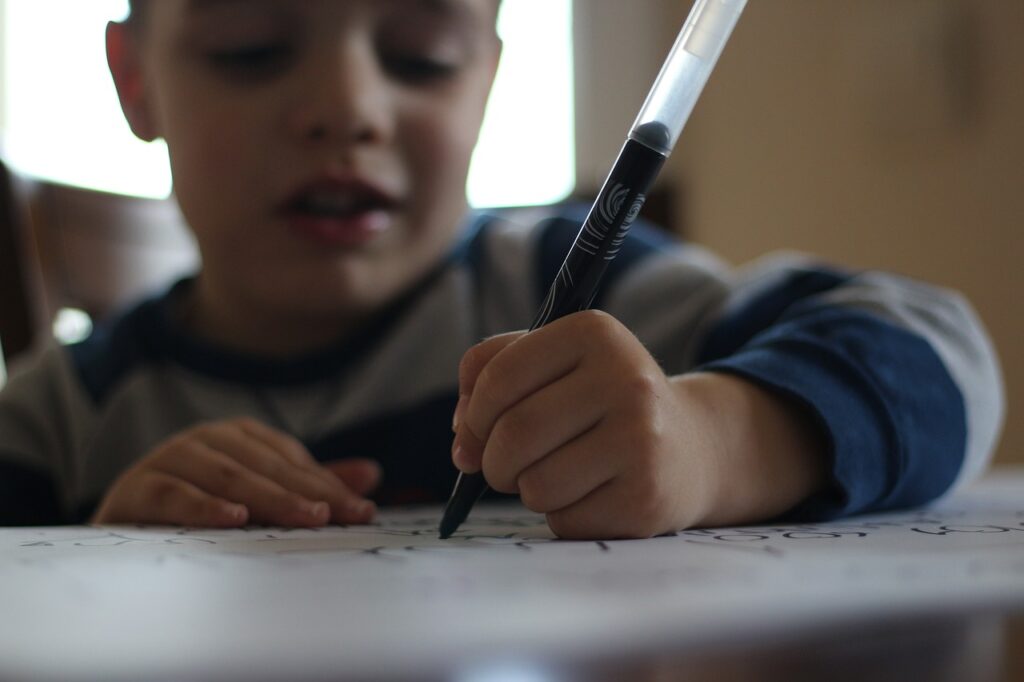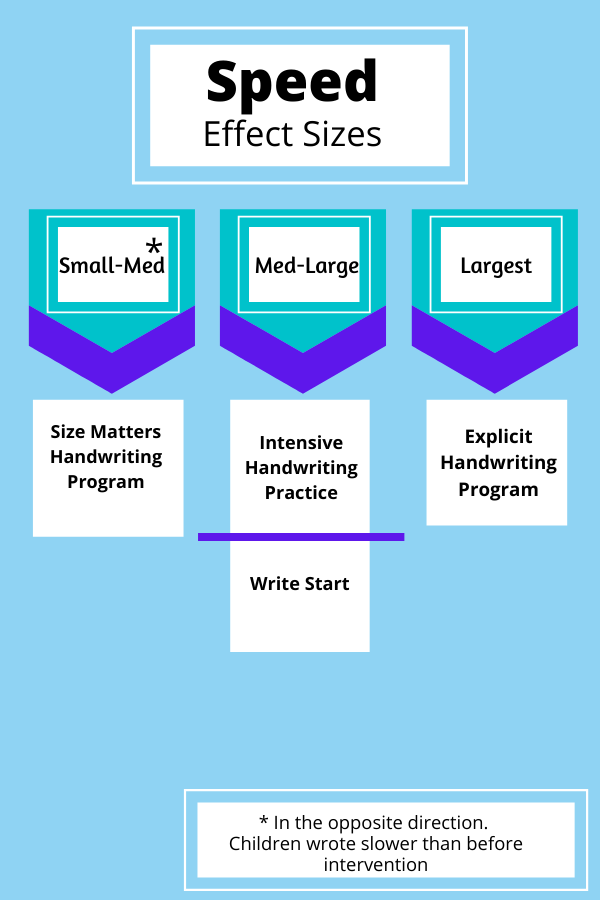
“You’re the physical therapist, right?” “Oh, here comes the handwriting teacher.” “Can you get me a weighted vest for him? He can’t sit still.”
All school based OT’s have heard one of these statements at some point in their career. While it sometimes takes a couple of years for teachers to recognize and understand who you are and what your role is, I love school OT. It is my jam. What appealed to me most about the school setting as a new grad was built in teammates. I was blessed with an enthusiastic and encouraging special education teacher. She planted the first seeds of teaching me to appreciate small gains and to realize I can’t control everything.
Backing Up Our Recommendations with Evidence
So what does the evidence say about the interventions OT’s use and the ones that many of our coworkers request? This systematic review will give you insight to just that–stability balls, handwriting interventions and weighted vests, to name a few favorites. Check it out below and see what areas you may want to reassess in your own practice.
Journal American Journal of Occupational Therapy (SNIP score 1.121)
Article Title Interventions Within the Scope of Occupational Therapy to Improve Children’s Academic Participation: A Systematic Review
- 1A Systematic review of homogenous RCTs
- 1B Well-designed individual RCT
- 2A Systematic review of cohort studies
- 2B Individual prospective cohort study, low quality RCT, ecological studies; and two-group, non-randomized studies
- 3A Systematic Review of case control studies
- 3B Individual retrospective case-control studies; one-group, non-randomized pre-post test study; cohort studies
- 4 Case series (and low quality cohort and case control study)
- 5 Expert opinion without explicit critical appraisal
- * This was a systematic review which included a wide array of evidence from RCT to Level III studies. As this type of systematic review doesn’t fall into either 2A nor 3A, I chose to categorize it into a level 2B study. The evidence reviewed was higher than case studies but lower than cohort studies.
Methods
The authors of this systematic review included studies that were peer-reviewed, in English and published between January 2000 through March 2017. They included only level I-III studies that fell within the scope of occupational therapy. Although many studies were not completed by OT’s, the authors did require that school practitioners or researchers conducted the studies. The study authors grouped articles into three categories:
- Educational Participation
- Literacy Participation
- Handwriting
Findings
Educational Participation
Weighted Vests The authors of the review concluded there is low evidence to support the use of weighted vests as a means to increase participation as from the evidence below.
In a Level II study, students with ASD served as their own controls in three conditions when they did not wear a vest, wore a vest with weight and wore a vest without weight. The targeted outcomes of time sitting, attention to task and seated behavior did not significantly improve.
The Evidence Points Toward…Insufficient Data to Say
A systematic review investigated 13 studies that were group or single-case studies with children with ASD. Eight studies indicated weighted vests are an ineffective tool to increase seated behaviors and engagement. Five studies did show strong support. Small sample sizes and a limited geographic area represented in the samples limit the external validity.
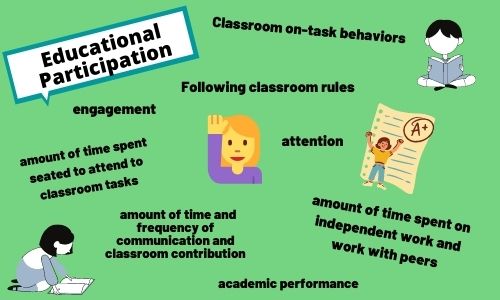
Stability Balls The authors of the review concluded that there is low evidence for the use of stability balls to improve educational participation.
In an RCT in a gen ed second grade classroom, students who sat on standard chairs were on task more often when working with peers and independently than those seated on stability balls.
In a level III study, investigators observed students in a second-grade classroom while using standard classroom chairs and then twice using stability balls. They found a significant increase in students being on task while the students used stability balls.
A second level III study found eight students with ADHD in 3rd-5th grade showed a significant increase in the average time they remained in their seat and the time they spent on task.
Yoga Authors of this systematic review concluded there is moderate evidence that supports the use of yoga as a tool to increase school participation.
A level III study assessed the Yoga4 Classroom program for second grade students and showed significantly increased attention and on-task for academic tasks.
Students in the intervention group of an RCT for a manualized yoga program geared toward social-emotional wellness in sixth to ninth graders showed significantly higher levels of school engagement than the control group.
A systematic review found children with learning disabilities, emotional and behavioral problems showed significant improvements in their communication and classroom contribution compared to control groups. However, the authors deemed the evidence inconclusive due to a high risk of bias.
Literary Participation
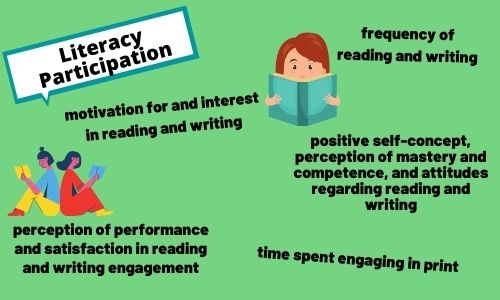
Full disclosure-I’ve excluded some findings in my reporting. Not to skew the findings, but to include the elements that seem most realistic for an OT to include in their session.
Strong evidence from four studies showed that children who participated in embedded creative and engaging literacy activities in small groups had significant increases in their positive attitude toward reading. They also showed an improved self-concept as a reader. An intervention mentioned that OT’s could definitely include is to have students create a story with the use of drawings and interactive discussions (Grajo, Candler, & Sarafian, 2020, page 6).
Handwriting The authors broke down the data on handwriting interventions into the domains listed in the headings below
Approaches to Address Component Skills
Authors reviewed four RCT’s to determine how addressing the underlying components of motor skills, kinesthesia and visual perception impact legibility. The study on kinesthesia did not demonstrate improvement. The remaining RCT’s showed moderate evidence that addressing underlying components of visual perception and motor skill training improved handwriting speed. These methods did not impact handwriting legibility.
Sensorimotor vs. Therapeutic Practice
Seven studies investigated the difference between sensorimotor activities and therapeutic practice.
Sensorimotor activities addressed visual perception, kinesthesia, visual-motor integration, in-hand manipulation, and the biomechanical features of handwriting. Therapeutic practice included paper and pencil activities that implement cognitive aspects of feedback on the child’s performance as well as self-evaluation (Grajo, Candler, & Sarafian, 2020, page 8).
Strong evidence from 1 Level II and 3 Level I studies showed therapeutic practice was more effective than sensorimotor methods to improve handwriting legibility for children with handwriting challenges,.
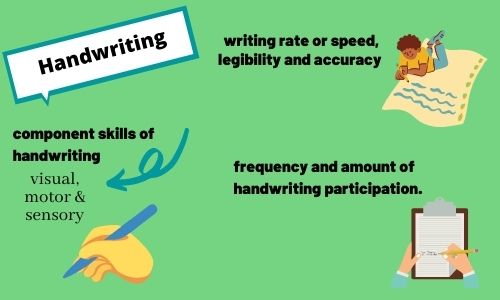
Interventions in Addition to Usual Classroom Activities
The evidence for students receiving additional instruction outside of the standard instruction within their classroom was low and with mixed results. An RCT and Level II study found for typically developing children there was a significant positive result with the use of additional instruction. Two different studies assessed differences between children receiving additional intervention and those who did not. These studies did not yield a significant difference between the groups’ performance.

Interventions in Place of Usual Classroom Activities
The review found results from six studies (4 Level II and 2 Level III) that combined programs (often the teacher and an OT working together to teach handwriting) has low evidence to support these over a teacher’s instruction alone. Of note is that there were insufficient details provided on the “typical classroom curriculum” that these combined programs replaced. Thus, one is limited in drawing a conclusion on the effectiveness of combined programs over a standard classroom curriculum.
A Level II study compared a manualized combined program to a manualized program of therapeutic practice found no differences between the two. Finally, a Level II study found a teacher’s designed instruction was more effective than a combined program that was manualized.
Of Note
The authors mention that limitations of this systematic review include some studies having no control group nor random sampling in addition to small sample sizes. They also included that many studies were completed by practitioners outside of occupational therapy, such as school psychologists, reading interventionists, etc. However, the interventions were within the scope of OT practice. Therefore, they suggest that one may be limited in the ability to predict how these interventions and findings would generalize to pediatric OT’s practicing in schools and clinics.
What did you learn?
For me, it is always a little disheartening to read evidence that does not support sensorimotor approaches over therapeutic practice. Sensorimotor is fun and engaging, and I do believe children are learning when we teach them this way! However, if the evidence is pointing toward therapeutic practice to be more effective to improve legibility for handwriting, I think we have a duty to accept that and incorporate these strategies into our sessions.
By no means do I think we can’t use something if there is not an article to back it up. However, I think we need to consider the evidence and make sure evidence based treatments are taking up the majority of our treatment time!
References
Grajo, L. C., Candler, C., & Sarafian, A. (2020). Interventions Within the Scope of Occupational Therapy to Improve Children’s Academic Participation: A Systematic Review. American Journal of Occupational Therapy, 74(2). doi:10.5014/ajot.2020.039016

